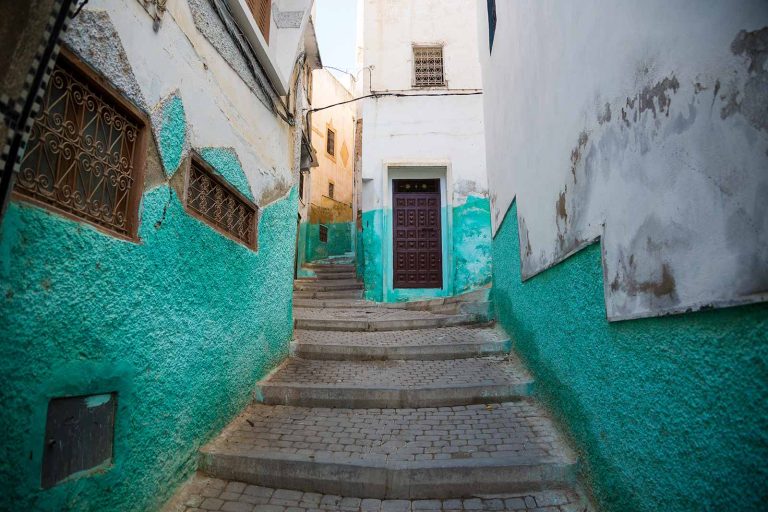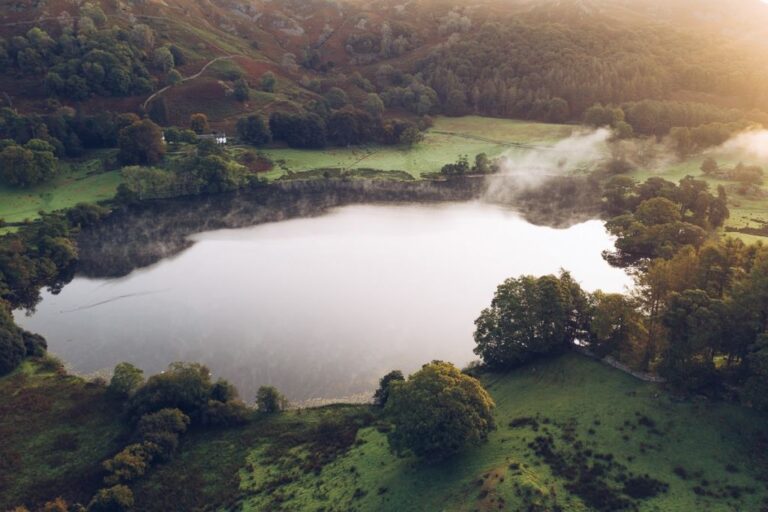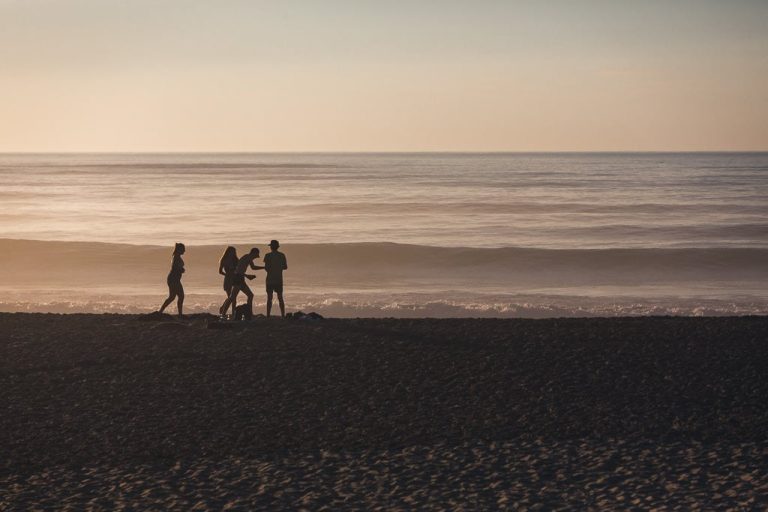Lake Mývatn, Iceland is an area rich in geological uniqueness and natural wonders. Explore one of the newest areas in Iceland that is still under construction thanks to ongoing volcanic activity.
Mývatn is an area in the north of Iceland bursting with geological richness.
Centred around a shallow lake of the same name, Mývatn is an active volcanic area with a landscape that continues to be formed with unusual twists. As one of the few wetland areas in Iceland, water and lava combine at Mývatn with astounding effects.
Walk over still-warm lava fields towards surreal landscapes, hike through unique shapes formed from underwater lava and inspect huge fissures in the earth’s crust. Swim in sublime natural pools and explore bubbling mud pots, steaming vents and basalt columns with acoustic powers.
There’s no town as such at Mývatn, just a collection of hotels and a few services. But, it’s a great base in Iceland to explore a unique area and enjoy several great day trips to nearby attractions.
Here are some great things to do in Mývatn, Iceland.
Booking your trip via the links on this page (or on our book page) will earn us a small commission, at no extra cost to you. Thanks for your support – Paul & Mark.
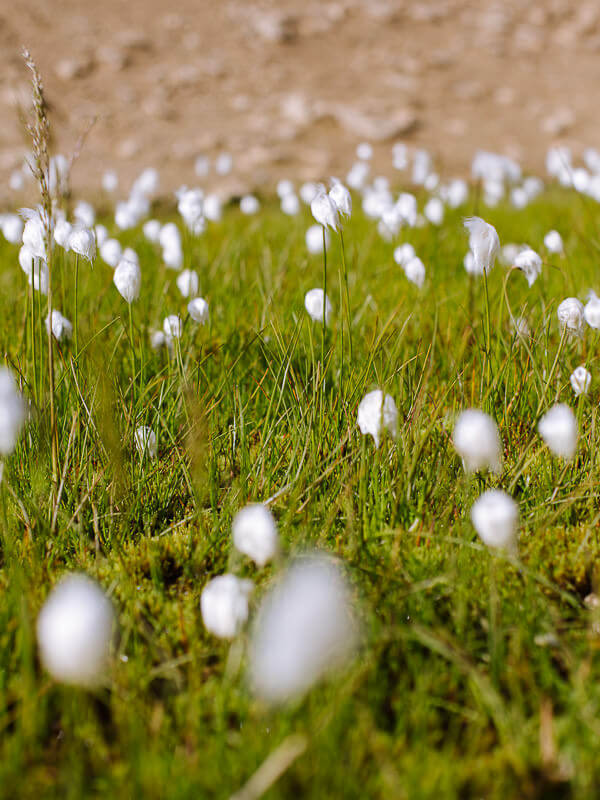
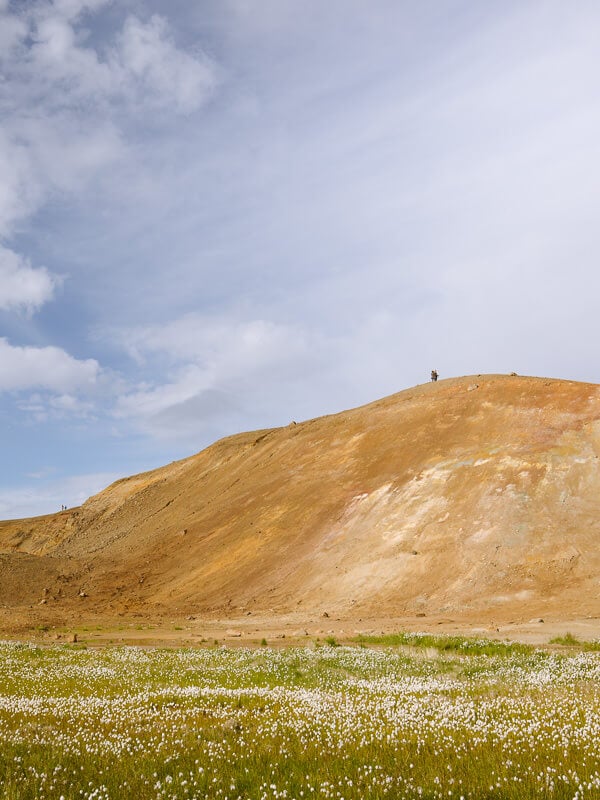
1 – SKÚTUSTADAGÍGAR PSEUDO CRATERS
Pseudo craters are strange looking natural formations resembling giant pimples in the earth’s crust. They are formed when hot lava flows over a wetland and boils the water. The steam created from this process caused explosions which created clusters of pseudo craters.
The pseudo craters at Lake Mývatn were formed 2,300 years ago and are some of the largest in the world.
The best way to see the pseudo craters is to take the path around the Skútustadagígar Pond. It’s around one hour of easy walking and visits the most interesting of the Mývatn pseudo craters. It’s also a lovely stroll with great views of the lake.
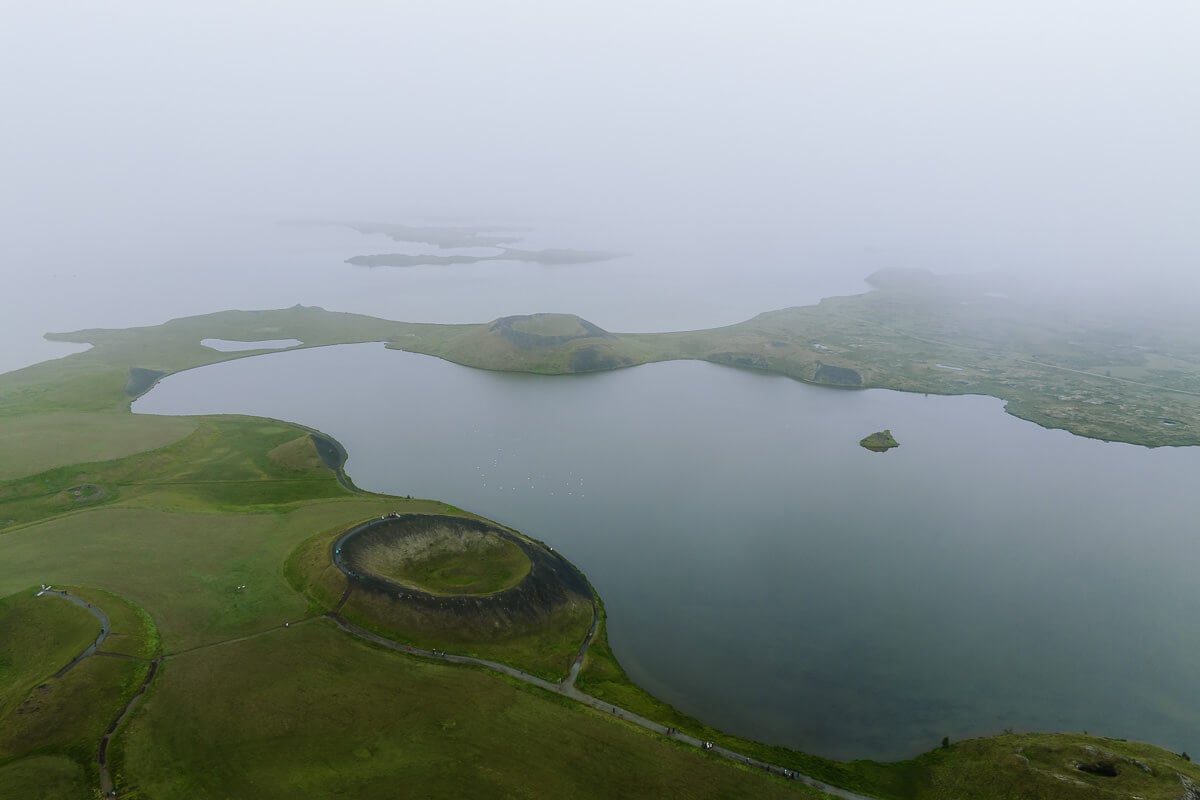

2 – KÁLFASTRÖND
Kálfaströnd is a farm with marked walking routes through a birch forest with interesting lava formations. It’s a great spot to experience the unique and diverse landscape around the Mývatn area.
The 2.1-kilometre circuit should only take around 35 minutes. The trail is very easy to follow and includes several secluded spots for a scenic picnic
Kálfaströnd is a great destination for bird watching as a prime habitat for Harlequin, Barrow’s Goldeneye, Golden Plover and plenty of ducks.

3 – DIMMUBORGIR
Dimmuborgir is a perfect example of the bizarre landscapes in the Mývatn area formed by the unique geological conditions. High pillars of lava in strange formations typify one of the most interesting lava fields in Iceland.
The area was formed when a 2-kilometre pool of molten lava eventually drained into Lake Mývatn. When steam from the boiling water percolated through the lava flow, it cooled into the shapes you see at Dimmuborgir today.
Due to the way these lava structures are formed, this phenomenon is usually found under the ocean. Mývatn is the only place where you can see them on dry land.

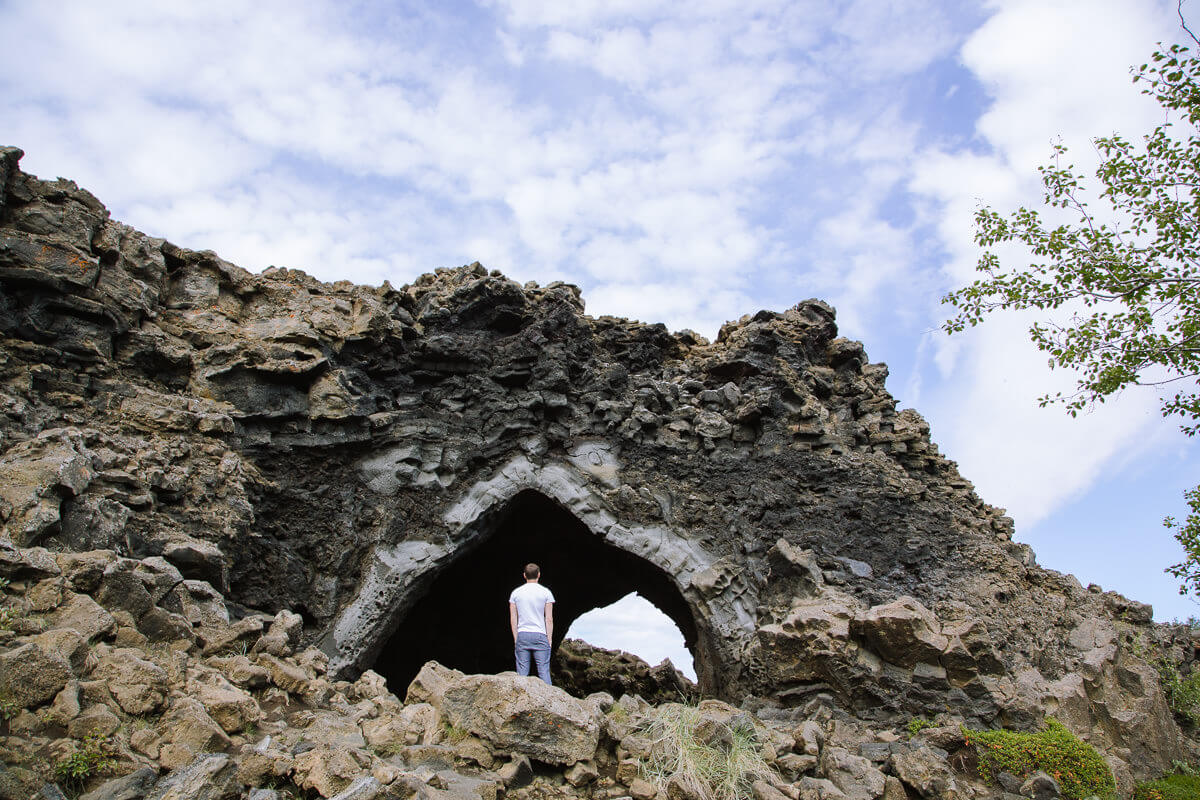
4 – HVERFJALL CRATER
Hverfjall is a tephra cone volcano near Mývatn which is perfectly shaped like a massive stadium. Seen from miles around, it’s one of the most prominent features of the Lake Mývatn area.
The cone is 1 kilometre in diameter and 396 metres high, forming a massive black cone and a visual spectacle from an eruption that occurred around 4,500 years ago.
There are two paths up to the rim of the crater which provide excellent views of both the centre of the volcano and the surrounding area. One path goes up from the northwest side and one from the south. It takes around 20 minutes to hike up to the top. Once up there, spend as long as you like exploring the rim.

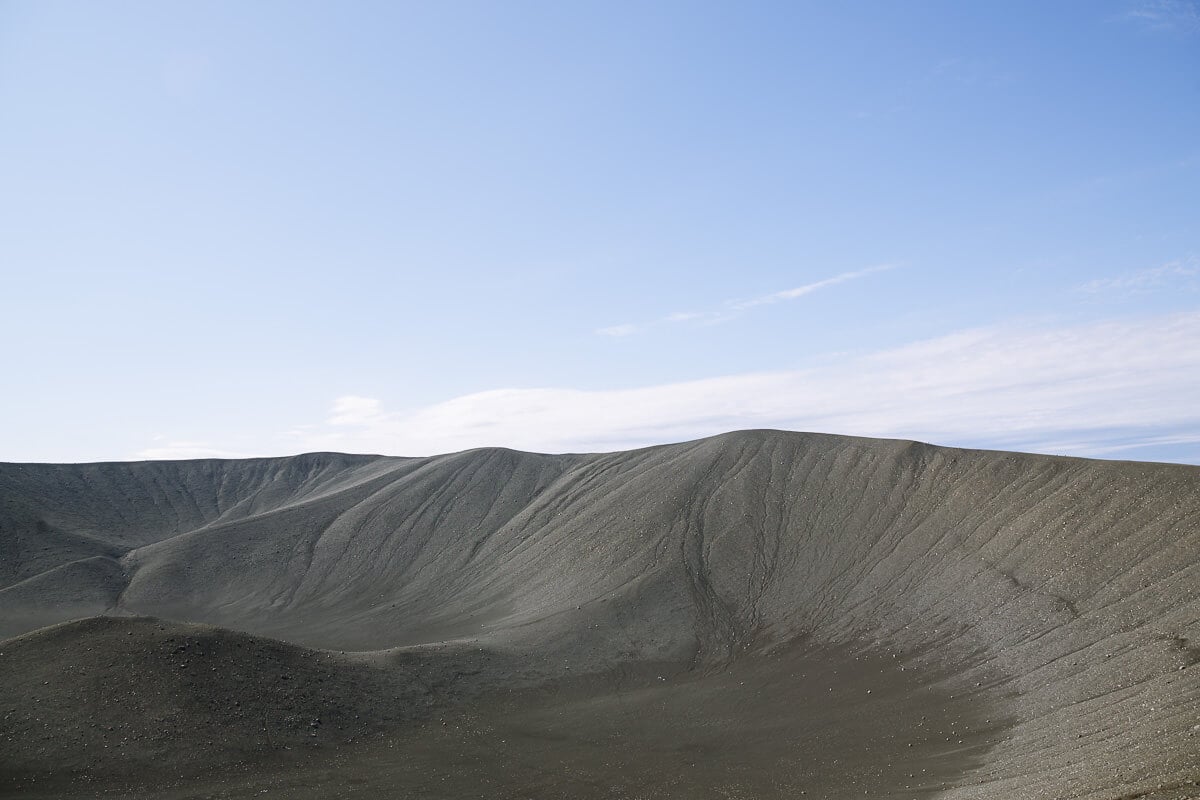
5 – GRJÓTAGJÁ CAVE & FISSURE
Grjótagjá is a small lava cave that shot to prominence after the love scene between Jon Snow and Ygritte from Game of Thrones was filmed in this small, interesting space.
The cave contains a thermal pool which for years was considered one of the prime hot springs in Iceland. However, after the nearby Krafla volcanic system erupted nine times between 1975 and 1984 the water in the cave boiled to dangerous temperatures. The water eventually cooled, but the temperature has since become unstable, and swimming is no longer permitted.
Nonetheless, Grjótagjá is still a very interesting place to visit around Mývatn. Don’t miss the huge fissure on top of the cave which you can see stretching towards Hverfjall.


6 – HVERIR
Hverir is a surreal geothermal area and one of the highlights of a visit to the Mývatn area.
On a burnt-orange landscape – completely bare of all vegetation – this unique Icelandic geology is exposed.
Vents in the earth’s crust, called fumaroles, expel volcanic gases and vapours in dramatic fashion. Large mud pots bubble and gurgle grey splatters onto the orange-red earth. Boiling rivers trickle along the barren landscape.
It’s a fascinating place to visit that feels like you’re walking on the surface of Mars. Located right by the Ring Road, 6 kilometres east of Lake Mývatn, it’s a thoroughly worthwhile stop on an Iceland road trip.
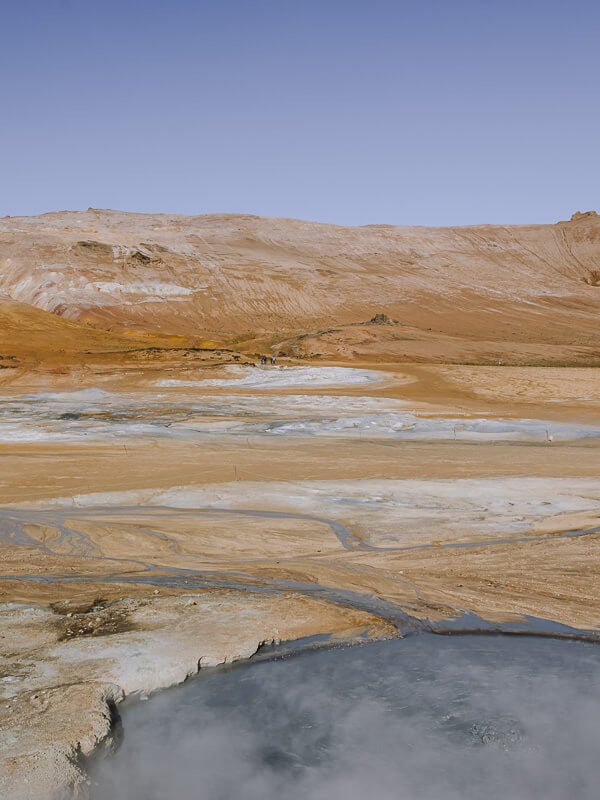
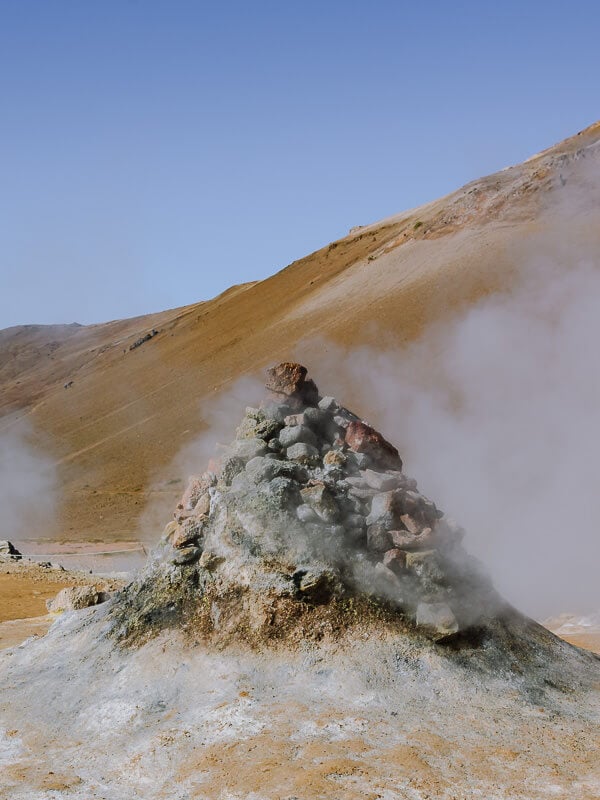
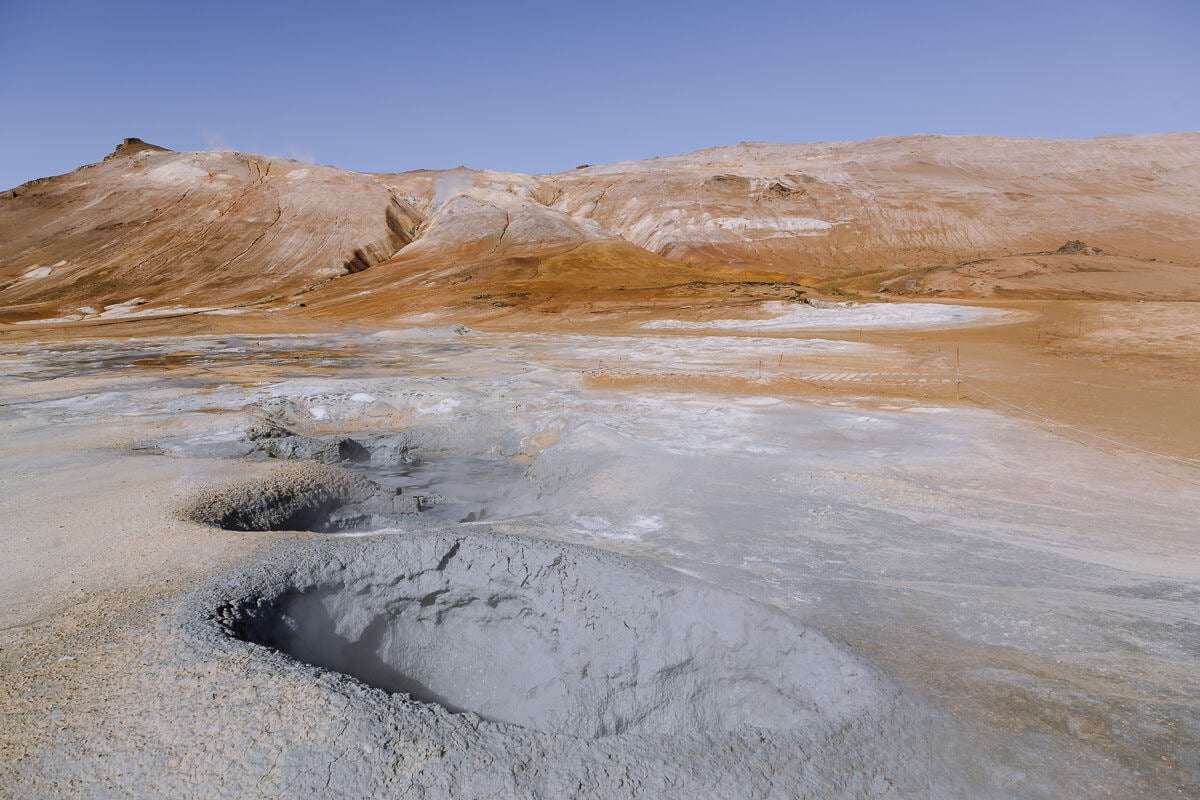
7 – KRAFLA
With 29 eruptions under its belt, Krafla is one of the most active volcanoes in Iceland.
The caldera is 10 kilometres wide, but the fissure extends for 90 kilometres. Inside the fissure zone, Viti Crater with its emerald-green lake is the showpiece of this incredible natural phenomenon in the Mývatn area.
Krafla is the force that causes the nearby Grjótagjá Hot Springs to swing across a volatile temperature range. With liquid rock just 2 kilometres beneath the earth’s surface, it’s a unique source of power that Iceland has been harvesting since 1977.
In addition to the Viti Crater, the nearby Leirhnjukur Lava Field is also an interesting thing to do in Mývatn. Located within the extensive caldera, this visibly intriguing lava field has a hiking trail that winds through twisted rocky shapes with steam rising beyond moss-lined paths.

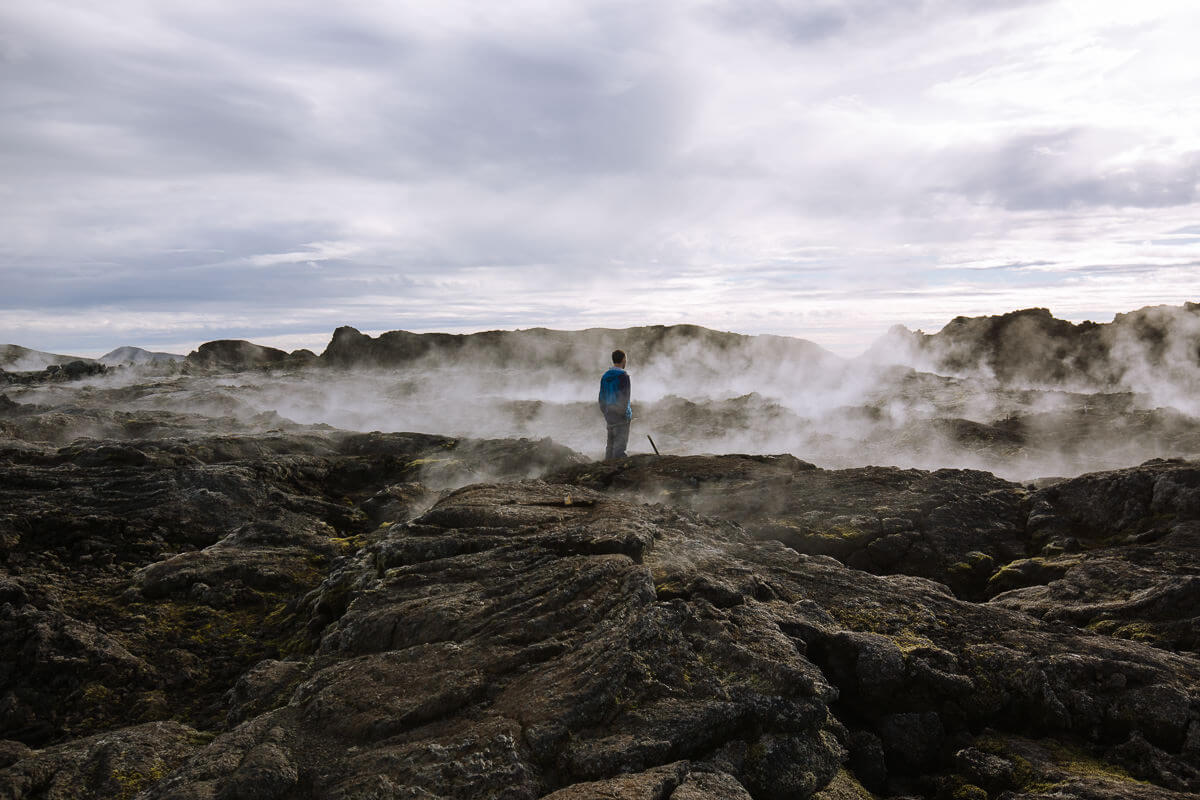
8 – DETTIFOSS
Dettifoss is a powerful waterfall, 77 kilometres (1 hour, 20 minutes) from Mývatn. Dropping 44 metres into a narrow canyon, it’s the largest waterfall by volume in Iceland and one of the most powerful in Europe.
The falls are fed from the Jökulsá á Fjöllum River which flows from the Vatnajökull glacier. The west side of Dettifoss is the easiest access point with a paved road from the Ring Road and a large car park. There’s an upper and lower viewpoint and you can expect to get wet at both of them.
It’s a spectacular sight and one of the most impressive waterfalls in Iceland. If you’re based around Lake Mývatn, Dettifoss is a great day trip.
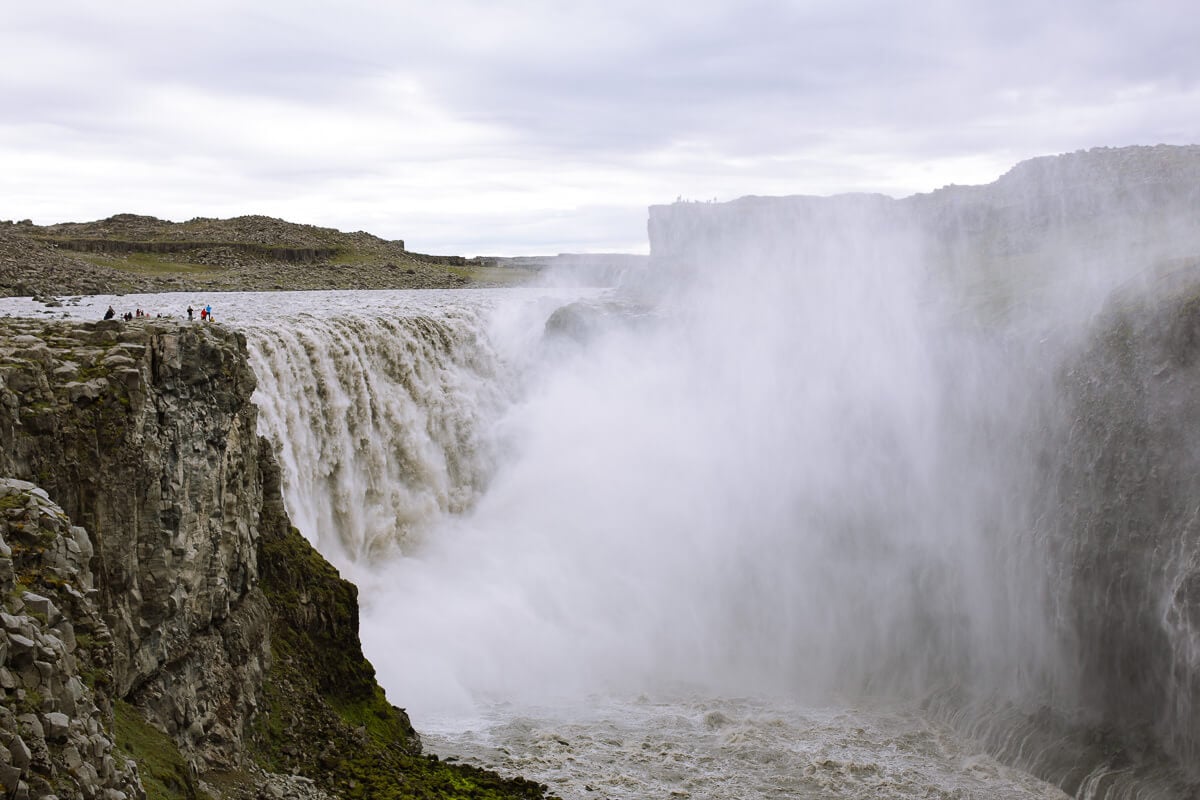
9 – HÚSAVÍK
Húsavík is the whale capital of Iceland. Located just 50 minutes from Mývatn, it’s the perfect day trip to spot one of the 23 species of whales and large colony of puffins that are regularly seen here.
Whale spotting tours leave from the harbour which, as the oldest settlement in Iceland, is also an interesting town to stroll around. Don’t miss the very photogenic colourful wooden houses along the water.
If you don’t make it on a whale spotting tour, visit the life-size replicas at the Whale Museum, home to a 22-metre-long Blue Whale skeleton.
Húsavík is also famous as the hometown of Lars and Sigrit from the Eurovision Film: The Story of Fire Saga.


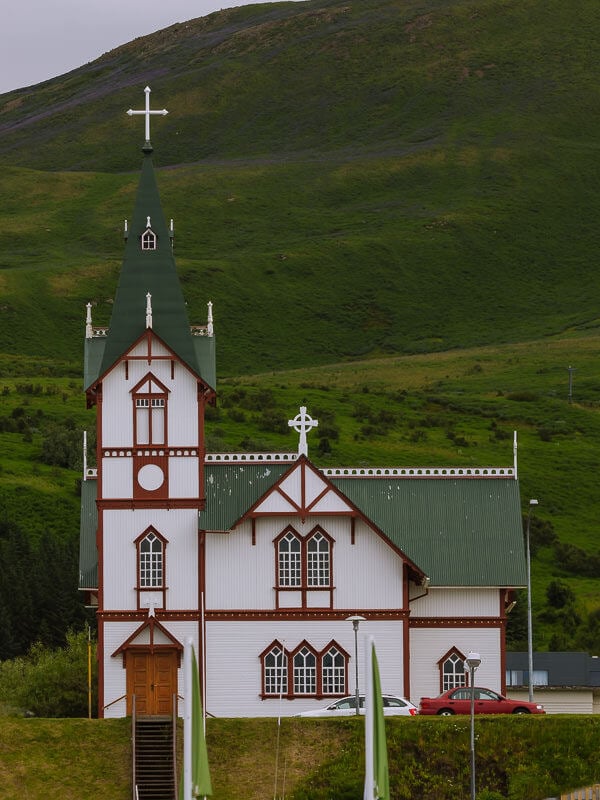
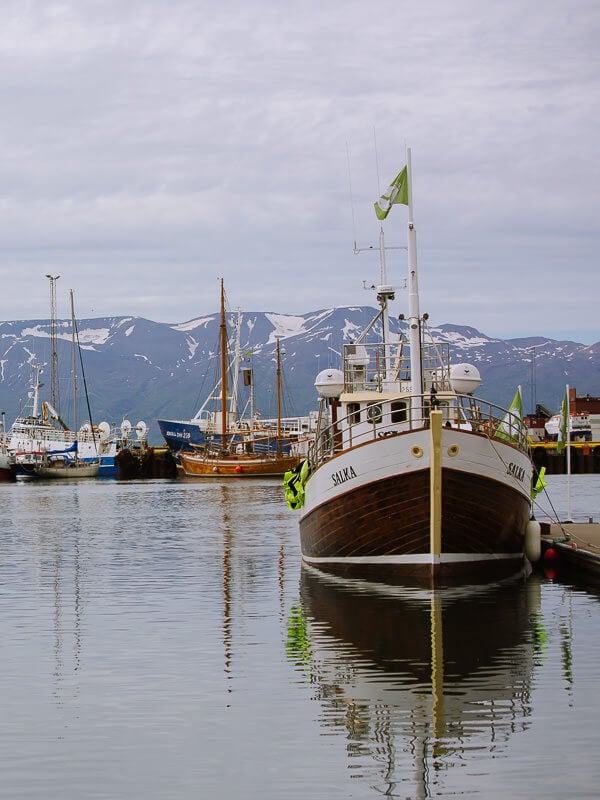
10 – GOÐAFOSS
Goðafoss is a wide horseshoe-shaped waterfall 45 kilometres from Mývatn and a popular spot on a Ring Road itinerary.
The falls are between 9 metres and 17 metres high and set in a captivating location as they curve around low-lying lava fields. The water is decorated with a blue-green pattern putting Goðafoss as a contender for the most beautiful waterfalls in Iceland.
There are viewing platforms on both the west and east side of the falls. You can easily walk between them in about 20 to 30 minutes.
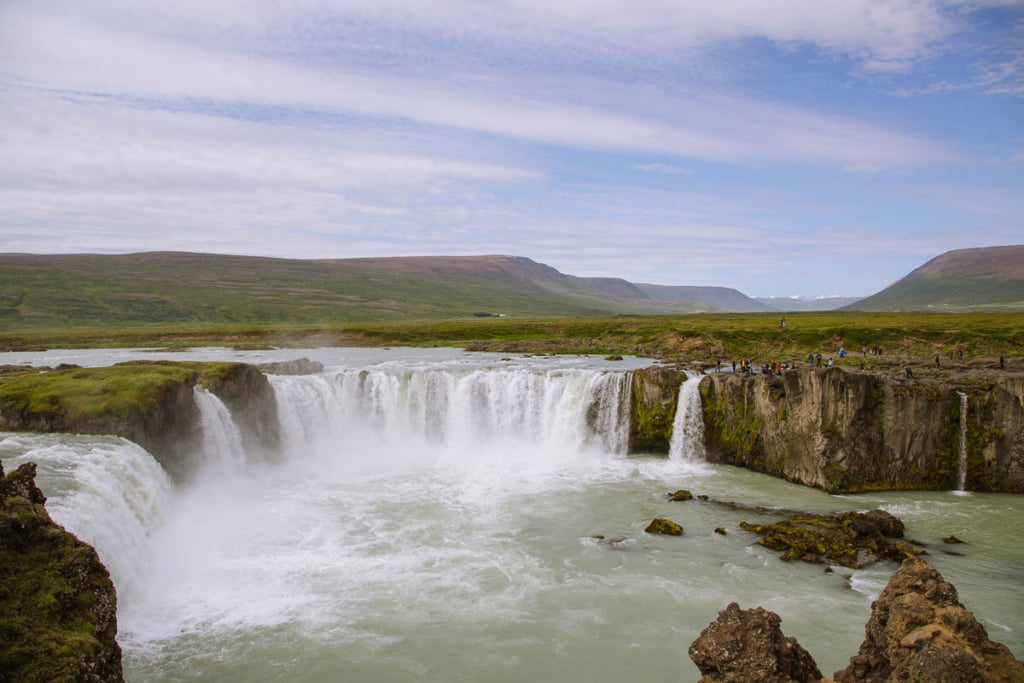
11 – MÝVATN NATURE BATHS
The Mývatn Nature Baths is a milky blue lagoon pool, heated by a nearby hot spring. Although it’s a man-made pool, the lagoon is set overlooking a barren landscape with the facilities nicely blending into the surroundings.
The temperature changes slightly as you move around the pool, but averages a delightfully pleasant 96°F – 104°F (36°C – 40°C).
There are 2 steam baths, a hot tub, a separate pool for kids, a café and a swim up bar where you can order alcoholic and non-alcoholic drinks.
It’s a great balance between the Blue Lagoon which is expensive and can get very busy, and the completely natural hot springs, like those in the Westfjords, which have no facilities at all. Advance booking is recommended – myvatnnaturebaths.is/
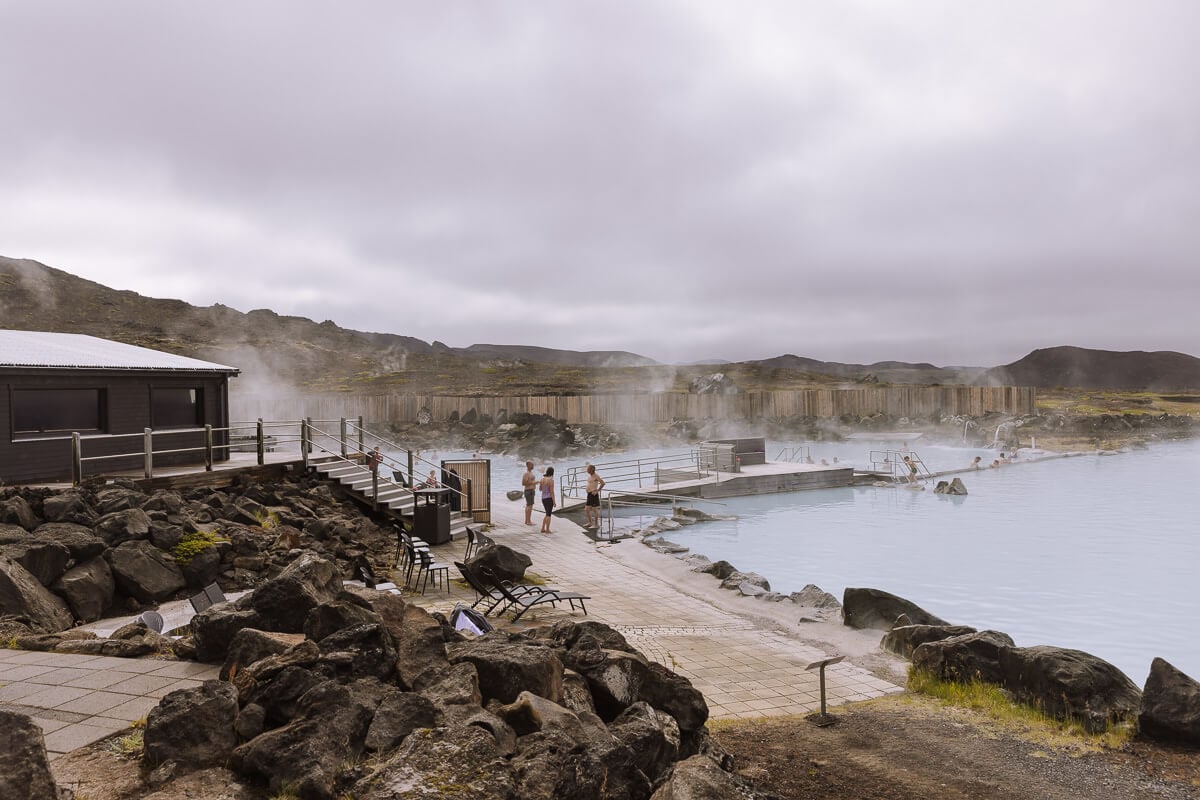

12 – ÁSBYRGI
Ásbyrgi is a unique horseshoe-shaped canyon that stretches 3.5 kilometres long and 1.1 kilometres wide. It’s a small corner of the dramatic Vatnajökull National Park, but one of the most interesting areas to visit.
The 100-metre-high curved canyon walls are a sight to see, but the surreal aspect of Ásbyrgi is the thick woodland that surrounds them. In an otherwise barren country, Ásbyrgi is a haven for various species of trees. The most common is birch, but you’ll also find spruce, larch and pine.
There are a few hiking paths to explore the area including one to Lake Botnstjörn and The Island, a 25-metre rock formation that divides Ásbyrgi in half.
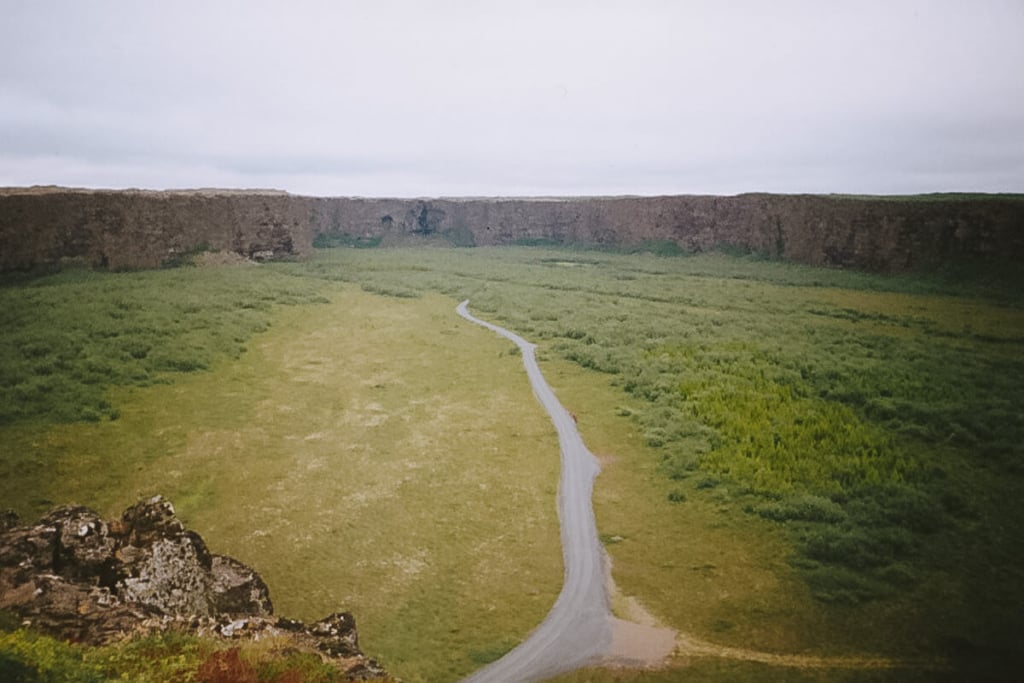
13 – ASKJA
Askja is a large volcano situated in the Dyngjufjöll mountain range which is part of the Vatnajökull Glacier National Park in the Iceland Highlands. Its main caldera was formed over 10,000 years ago at the end of the last Ice Age when, during an eruption, the roof of the large magma chamber collapsed in on itself causing a depression.
The result was an enormous 45 square kilometre caldera, 8 kilometres in length.
It’s a challenging drive that requires a 4×4 which we cover in our guide to Askja. But tours also leave from Myvatn so you can enjoy this special place without taking on the drive yourself.
Whichever way you make it to Askja, it’s worth the effort. The colourful rocky walls are nestled beside a younger crater with steep orange and yellow sides and a milky geothermal pool. All set under the Vatnajökull Glacier, Askja is a magical place.
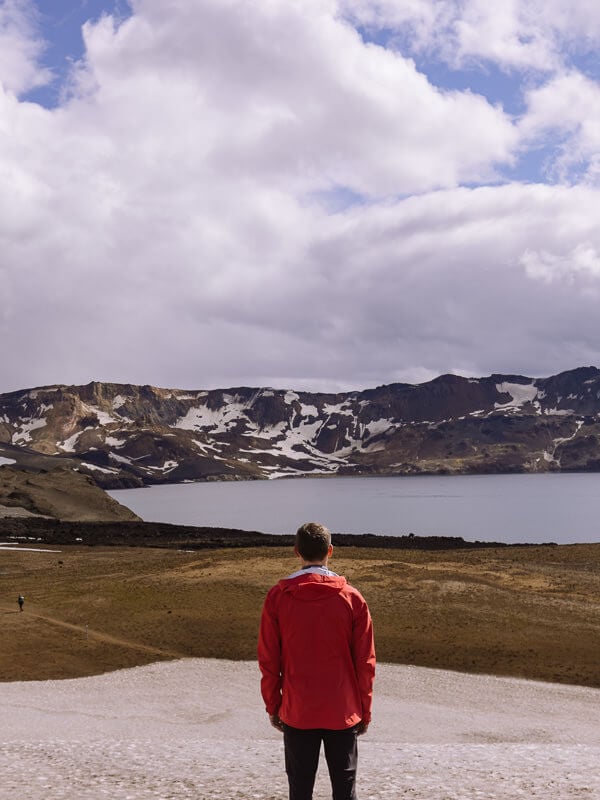
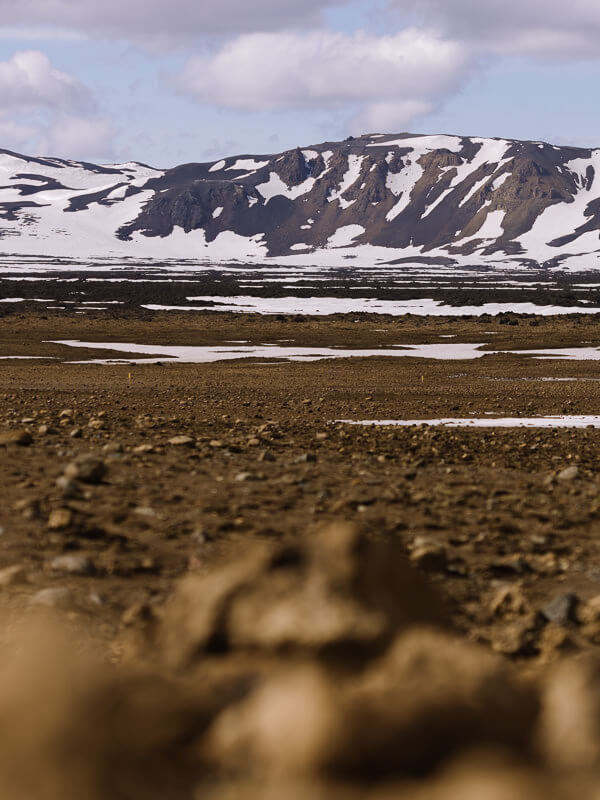
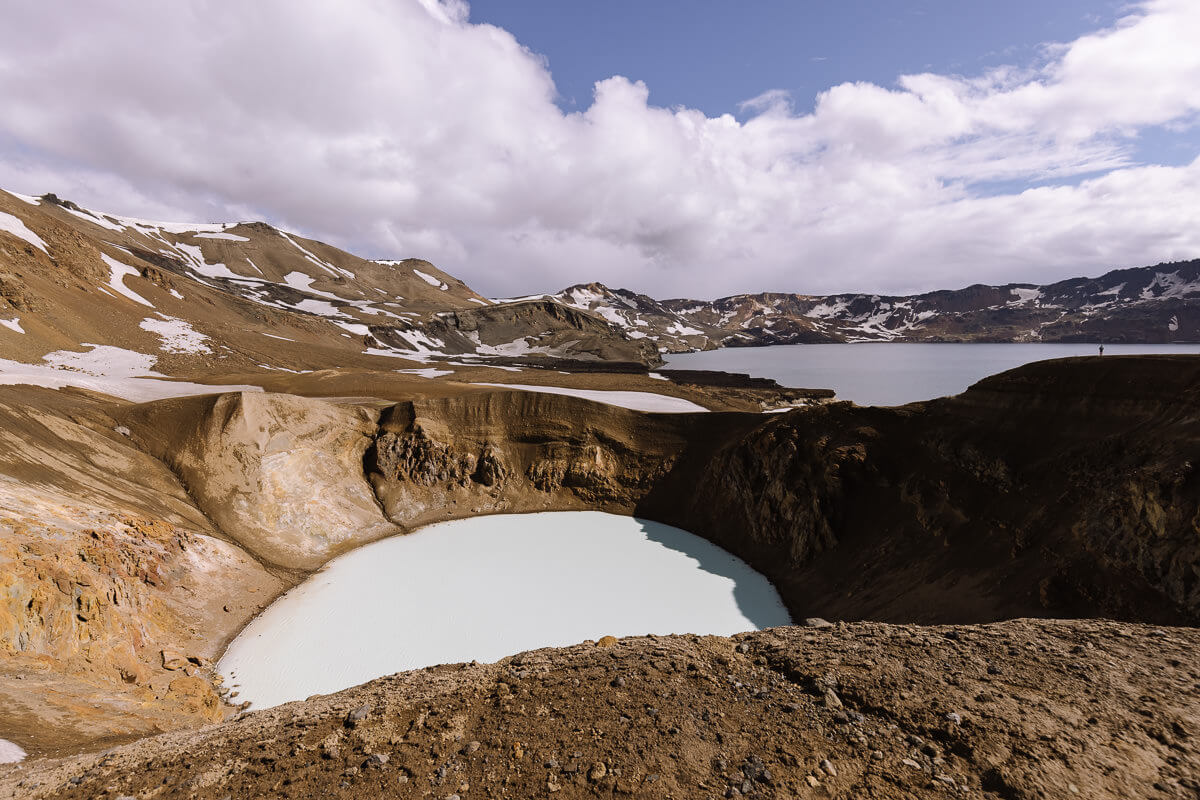
14 – HLJÓÐAKLETTAR
Hljóðaklettar is a collection of basalt columns stretching in multiple directions creating swirls, spirals, roses and arches that are known to produce haunting acoustic effects. It’s around 1 hour’s drive from Mývatn in the Vatnajökull National Park.
There are two hiking trails which start at the parking lot. The blue trail is a 1-kilometre path that will take around 30 minutes. The red trail circles the whole area and includes the best photographic spots; this should take around 2 to 3 hours to complete.
Keep an eye out for the fortress-like Kastali, the giant Tröllið and the Kirkjan or church.
From Mývatn, HljóA Complete Guide to Mývatn, Icelandðaklettar is accessed via the 862 which is closed in winter.
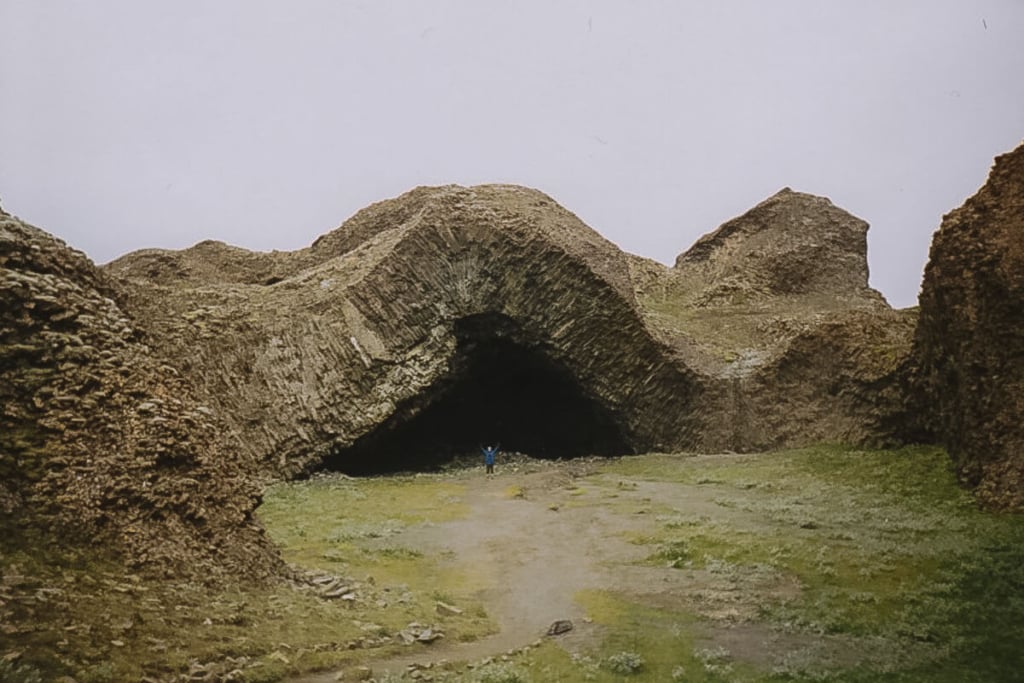
PLANNING YOUR ICELAND TRIP
Iceland is an excellent destination for semi-adventurous travellers who like to get off the beaten track and immerse themselves in stunning scenery. Here’s some more reading from us to help plan your journey to the land of fire and ice.
If you found this guide useful, we’d love it if you could follow us on Instagram.
GENERAL TRAVEL TIPS
15 useful tips for visiting Iceland
Our tips for driving in Iceland
How to drive on the F-Roads of Iceland
EXPLORING THE HIGHLANDS
Top places to visit in the Iceland Highalnds
7 Amazing Landmannalaugar hikes
Epic adventure self-driving to Askja
Our complete guide to Thorsmork
STAY IN TOUCH
Stay up to day with our travels on Instagram and get semi-regular updates directly to your inbox via our newsletter.
INSTAGRAM // SUBSCRIBE
SHARE THIS GUIDE
If you found this guide useful, please share it to your social media or pin it to your Pinterest boards.




